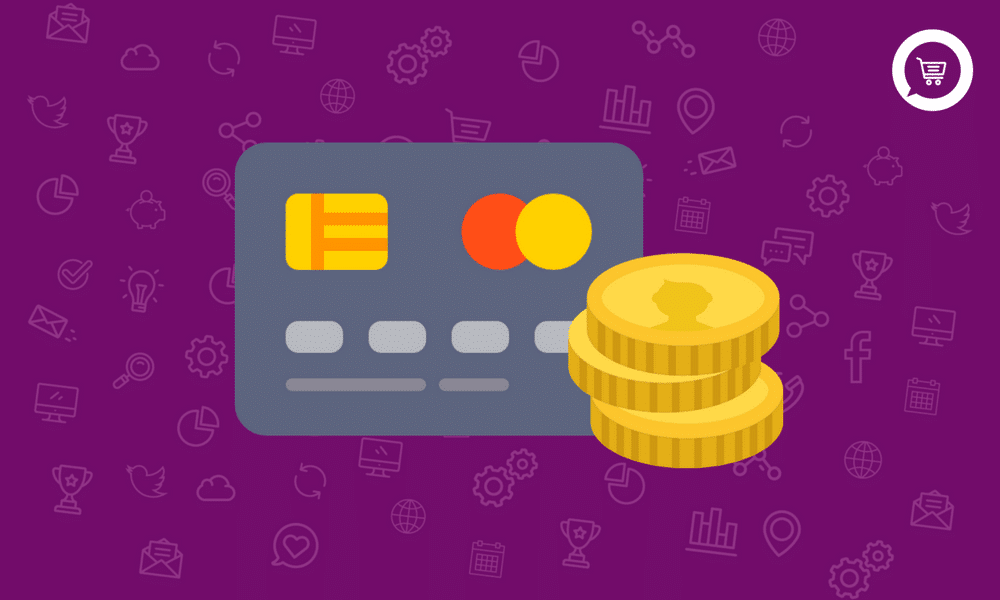When choosing the best payment solution for your e-commerce, there are several things to consider. E-Commerce payment solutions have sprouted dramatically over the last few years with merchants and consumers both shifting to digital forms of online spending with mobile and website growth dominating as the top channels to accept payments. With the virtual global e-commerce reach, companies with websites and mobile applications, stand to generate increased revenue with international digital traffic.
The level of encryption of data being an ever-present concern, visitors to your site should feel safe and trust their transactions while building a relationship with your company. Consumers, presented with a dizzying array of purchase methods, will often make purchases from sites based on which payment methods are accepted.
By accepting only one form or relying on traditionally acceptable forms, you will limit growth to your customer base and overall revenue. When determining a proper payment solution for e-commerce, ease of transaction is a quality that affects sales.
Consumers are particular about the user experience and expect smooth “hassle-free” payments. Negative or troublesome payment gateway experience and bad payment options will lead to a drop in total sales.
With an abundance of top payment solutions available, offering additional methods of payments will greatly enhance the consumer experience and generate increased sales – most businesses use a variety of digital payment methods to cater to exploding online activity.
There are many good e-commerce payment networks, competition is still ongoing and strong without the presence of market domination by any one company. When choosing a company, there are 6 crucial factors to consider besides global reach.
- Transaction fees: Compare the setup fees, monthly maintenance fees, transaction fees and associated fees.
- On or off-site transaction processing: Consider the importance of whether the user is directed off-site to complete payment. PayPal, the main US-based e-commerce payment solution provider, requires the user to be transferred to an external website to complete payment. For an additional monthly service charge of $30, onsite processing is enabled and the consumer can then complete the entire transaction on your website.
- What is being sold: The choice for a suitable payment gateway provider depends on the business that you are involved in. The best payment solutions offer coverage of all or a combination of digital, subscription and physical goods or services.
- Types of payment methods accepted: Different online payment solutions companies have the ability to process various types of payment methods. This includes credit/debit, gift cards, bitcoins, ACH transfers/electronic checks, and other 3rd party online payment methods.
- Channels for outreach: Consider whether you are interested in enabling transactions through mobile and/or website applications, the ability to process active transaction links through the top three social media websites, or allowing customers to complete their purchase through links sent via SMS.
- Fraud protection and chargeback policy: Review the potential payment solutions company website’s data, they will publish to what extent the merchant is responsible and all associated fees and fines possible. Decide which limits you are comfortable with, there are many payment solutions structures available to suit all levels of both customer and merchant transactions.
The Best Payment Solutions to Offer for a Global E-Commerce Site
PayPal
To accept credit or debit, using a payment gateway or payment solution authorizes connections to payment networks. The best payment solutions providers combine both payment networks and merchant accounts. This is the model that PayPal is structured around.
Widely used across the US and global market, PayPal is an online payment processor serving more than 200 countries in 25 currencies. Although PayPal does not have startup costs or termination charges, additional monthly fees for onsite processing ability, known as PayPal Payments Pro, can be bothersome.
Stripe.com
Stripe is an industry newcomer and handles billions of dollars for 100,000 plus businesses globally. Known as a complete e-commerce toolkit, Stripe currently serves 25 countries with worldwide global expansion plans to all countries to be completed shortly.
“A suite of API’s that powers commerce for businesses of all sizes”, Stripe offers the ultimate software platform “needed for running an Internet business.” With base fees of Stripe equal to PayPal’s transaction fees, Stripe offers many features for free that PayPal tacks on extra charges for such as onsite processing.
Stripe does not charge extra fees for an international credit card or American Express transactions like PayPal. Stripe users benefit from available Apple Pay integration as well as complimentary developer tools.
CC Avenue
With a combined population of 2.6 billion and explosive e-commerce sales growth, India and China offer valuable customer base growth opportunities. CCAvenue, an e-commerce payment processing provider, is India’s largest payment gateway offering real time, multi-currency transactions with multiple payment options.
CCAvenue engines 2,20,000 small businesses in India and features free simple setup and offers global clients the ability to process payments with links via mobile platforms, social media websites and (SMS) text messages.
AliPay
China’s largest payment solution provider is the leader in online payments with over 400 million users and is the world’s largest 3rd party online payment platform. This payment system was created by Alibaba group – Alibaba is China’s largest online e-commerce site.
Alipay is a social payment network offering multiple payment channels such as QR codes in addition to traditional services typically offered by US-based payment solution providers. Utility bill payment services and additional purchase options like cell phone minutes or commuter passes are also processed for users.
Alipay processes half of all of China’s online transactions logging more than 80 million transactions daily. This is approximately three times the amount currently processed by PayPal. Alipay specializes in cross-border online payments, cross-border in-store payments, and customs declaration form interfaces.
Bitcoin & Cryptocurrency
The acceptance of a virtual currency or cryptocurrency, such as Bitcoin, means added revenue as well as customer base growth. The Shopify platform enables users to accept Bitcoins as a payment method. Bitcoin is a digital system as well as a virtual currency, transactions are processed using unique, single-use, Bitcoin addresses. Freedom from banks and government regulation means the absence of extensive security compliance procedures and delays. Freedom from global boundaries and time zones means instant processing.
Setting up a Bitcoin wallet is free, after a customer pays with Bitcoin, exchange the received Bitcoin into cash. Cryptocurrency online exchanges transform Bitcoin into many elements besides cash. Companies such as Coinbase convert ACH deposits, debit/credit cards, and PayPal funds into Bitcoin and supplies users with Bitcoin storage and transfer options. Merchants benefit from the use of cryptocurrencies because risks are dramatically lowered.
Bitcoin transactions are anonymous, sensitive personal data is not attached. Plus, they are irreversible and secure. Without the restriction of PCI compliance or fraudulent chargebacks, Bitcoin benefits merchants greatly with Bitcoin spenders also enjoying the perks of cryptocurrency use.
Bitcoin is a legal form of payment in Japan and Germany as well as a wildly active global payment method and remains a popular investment option. When deciding which payment solution for e-commerce will make a welcome addition to your site, the inclusion of a Bitcoin payment gateway, offered by Shopify and many other competitors, can give you the edge in increasing global customer reach and maintaining distinctiveness over the crowd by providing innovative and enhanced payment options.
Regardless of what kind of payment solution you choose, it’s important to offer several methods that best respond to your customers. Going cross-border means that you need to understand which are the top payment solutions in your target markets and adapting your site to accommodate those payments. After all, payment should be the easiest part of your customer’s experience, make it as simple as possible for them.
What payment solution do you think is the best for your e-commerce? Tell us below or tweet us!





